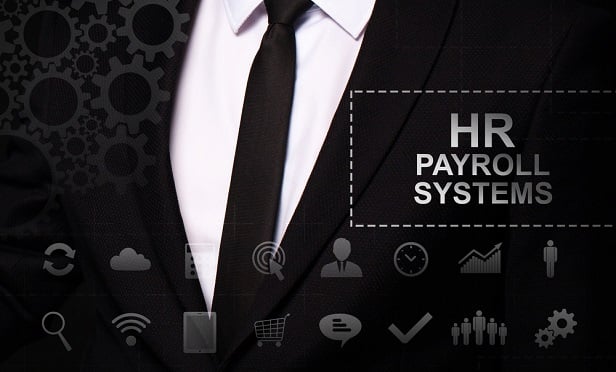 As employees get more involved and “hands-on” with their benefits, integrating payroll makes the end product easier for consumers as well as HR professionals. (Photo: Shutterstock)
As employees get more involved and “hands-on” with their benefits, integrating payroll makes the end product easier for consumers as well as HR professionals. (Photo: Shutterstock)
Like announcements for a new fusion restaurant, some companies lately have been describing the merger of benefits and payroll platforms with terms that are as spicy as … well, as spicy as they can make them.
“Strengthen growth strategies!” “Unparalleled responsiveness!”
The terms don't roll off the tongue quite as well as “Tex-Mex Egg Rolls!” but there are reasons to get excited, just the same.
The move toward integration of payroll and benefit management platforms exists for a relatively simple reason: it creates efficiencies and ease-of-use for both employees and HR departments. The actual process of finding seamless integration between payroll and benefit platforms has been less simple. But as technology and AI advances have opened new possibilities, integrated systems are becoming more common.
Related: Benefits administration: trends, deal breakers and technology's massive potential
“There have been a couple of dynamics over the past ten years that are driving this,” says Tom Dugan, vice president of product management at Benefitfocus. “The breadth of what needs to be in a benefits program has been a key contributor. The shift post-ACA to more high-deductible plans, and the growth of voluntary benefits and specialty products—like identity theft protection, for example—all these things are playing a role. As administrative teams have had to manage a broader range of benefits, it has forced rapid innovation.”
The ongoing changes have created greater demand for more efficiencies in benefit systems, Dugan said. “Because it has brought together solutions from different areas, that integration becomes really important; otherwise it becomes a challenge for the benefits team—and the company as a whole.”
Creating efficiencies for HR departments—and consumers
But it's not just employers and their HR departments that need a more efficient system. As employees get more involved and “hands-on” with their benefits, integrating payroll makes the end product easier for consumers, as well.
“The 'employee experience' is becoming a buzz term—you're seeing a greater attention on how to make benefits easier,” says Kevin Andrews, president and chief technology officer at Hodges-Mace. “We're seeing HR departments move more to an HR-mobile strategy; companies are getting rid of paper and letting employees choose benefits online. That brings in support tools, which are driving the payroll side toward tighter integration as data is exchanged.”
Dugan agrees that the consumer is counting on seamless integration to make their benefits easy to access and understand. “There are a whole host of things happening with payroll that needs to feed back into benefits administration. There needs to be consistency, and data quality is really important.”
Still in a period of transition
Dugan also notes that the benefits world still has not developed industry standards and systems have been built that create challenges for automating and data collection. “There are still a lot of file-based interfaces out there; even the leading players may have numerous payroll systems. So there are a variety of different interface models.”
With the rise of application program interface(API)-based models, Dugan says there's a gradual move toward a more efficient, standardized solution. “The use of API has been a way to connect between systems, and I think that's a shift in the technology, but it also leads to businesses thinking about the market differently as it's evolving.”
Dugan points to distributed ledger and blockchain technology as two areas that could bring innovation to payroll systems. Distributed ledger technology consists of databases that are spread across nodes or computing devices, which are updated independently, and not reliant on a central source. Blockchain is a form of distributed ledger technology, but in this model, data is grouped together and organized in linked blocks, which are secured using cryptography.
“These are emerging concepts that are still very early on; but five years out, they may offer some possibilities,” Dugan says.
Scale continues to matter
According to Andrews, there are payroll solutions available to every size of employer. His experience is that solutions can be found for every size of employer, and that complexity of the benefit package is more of a challenge than the number of employees.
However, small companies face some unique challenges, he adds. “Highly complex benefits in small companies can drive costs up. If you're under 50 employees, you will still have some challenges in automation. You just don't have the same efficiencies on the backside [as larger companies].”
On the other hand, Andrews adds, getting integration between payroll and benefit platforms can be challenging on any level. “There are still learning curves,” he says. “It's been interesting to watch mammoth payroll companies trying to figure this out.”
Read more:
© 2025 ALM Global, LLC, All Rights Reserved. Request academic re-use from www.copyright.com. All other uses, submit a request to [email protected]. For more information visit Asset & Logo Licensing.







